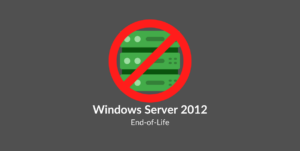What is Security Posture in Cybersecurity, and How Can You Improve It?

Organizations today face more cyber threats than ever before. The news often reports major data breaches, ransomware attacks, and other cyber incidents affecting all kinds of businesses. This growing threat landscape makes one concept very important: security posture. But what exactly is security posture, and why should your company care about it?
What Is Security Posture?
Security posture is your company’s overall cybersecurity strength and how well it can predict, prevent, and respond to cyber threats. It’s not just about having security tools—it’s about your entire security system working together.
Your security posture covers your hardware, software, networks, policies, rules, and even how your staff uses your systems. You can think of it as your company’s security health score.
Many businesses don’t fully understand their security posture until they suffer a breach or face an audit. This wait-and-see approach often leads to serious problems. A strong security posture needs active management and regular checkups.
Why Your Security Posture Matters
A weak security posture leaves your company open to many types of attacks. These gaps can cause:
- Money loss from theft, fraud, or business disruption
- Damage to your brand and customer trust
- Legal fines and penalties
- Theft of trade secrets
- Business downtime
When Target had its big data breach in 2013, the company paid $202 million in settlements, not counting the harm to its reputation. The breach happened partly because of security posture problems—mainly issues with how outside vendors could access their systems.
Key Parts of a Strong Security Posture
Risk Management
Risk management is the base of good security posture. You can’t protect everything equally, so you must figure out which assets matter most and what risks they face.
This process includes:
- Making a list of your assets and sorting them by importance
- Looking at what threats could affect you
- Testing for weak spots
- Ranking risks based on how likely and harmful they might be
- Setting up controls based on risk levels
Companies with solid risk management programs check their risks often. They know that new tech, business changes, and new threats mean they must keep updating their security plans.
Incident Response
Even with the best defenses, security incidents will happen. How you respond to these events affects how much damage they cause.
A good incident response plan includes:
- Clear roles for the response team
- Step-by-step guides for handling different types of incidents
- Rules for talking to stakeholders and the public if needed
- Regular drills and practice runs
- Learning from each incident to do better next time
When Colonial Pipeline was hit with ransomware in 2021, they shut down as a safety measure. While this helped contain the attack, their response wasn’t quick enough to restore services, which led to fuel shortages across the East Coast.
Compliance and Governance
Following regulations gives you a starting point for security, but just checking boxes doesn’t mean you have good security posture. Strong governance goes beyond basic compliance.
Effective security governance includes:
- Clear security rules that match business goals
- Defined security roles and duties
- Regular updates to company leaders
- Security built into business processes
- Ongoing checks of both internal and external rules
Attack Surface Visibility
You can’t protect what you don’t know exists. Many companies struggle to see their whole attack surface—all the places where an attacker might try to break in or steal data.
To improve attack surface visibility, you need:
- Complete asset discovery and tracking
- Constant monitoring of network traffic and endpoints
- Cloud resource inventory
- Regular scans for weak spots
- Assessment of vendor and supply chain risks
Employee Training and Awareness
Your staff can be your best defense or your biggest weakness. They need to know how to spot and respond to security threats.
Good security awareness programs:
- Go beyond yearly compliance training
- Use real-world examples that relate to staff jobs
- Include fake phishing tests and other practical exercises
- Measure success through behavior changes, not just completion
- Create a culture where everyone owns security
Posture Across Different Areas
Data Security Posture
Data is vital for most companies. Your data security posture involves how well you protect sensitive information throughout its life cycle.
Key parts include:
- Data sorting and inventory
- Access controls and encryption
- Data loss prevention tools
- Backup and recovery plans
- Following data protection laws
Cloud Security Posture
As companies move to the cloud, their security posture must extend there too. Cloud Security Posture Management (CSPM) helps find and fix risks in cloud systems.
Cloud security posture covers:
- Identity and access management for cloud resources
- Config management to prevent mistakes
- Monitoring cloud workloads
- Joining cloud security with on-site controls
- Understanding what security tasks you handle vs. your cloud provider
Identity Security Posture
With traditional network borders gone, identity has become the new perimeter. Your identity security posture focuses on managing who can access what resources and when.
Strong identity security includes:
- Solid login methods (MFA, passwordless)
- Giving people only the access they need
- Regular access reviews
- Special management for powerful accounts
- Identity lifecycle management
Application Security Posture
Apps often serve as the front door to your sensitive data and systems. Application Security Posture Management (ASPM) finds and fixes flaws throughout the app lifecycle.
Good application security posture involves:
- Secure coding practices and training
- Regular code reviews and security testing
- Runtime app protection
- API security checks
- Checking third-party components for security issues
Advanced Ways to Improve Security Posture
Zero Trust Architecture
The old “castle and moat” approach to security no longer works with today’s systems. Zero Trust assumes threats exist both outside and inside the network, so trust is never given freely.
A Zero Trust approach includes:
- Checking all users and devices, no matter where they are
- Limiting access to only what’s needed for the job
- Always monitoring and validating access
- Breaking networks into small segments
- Encrypting data when stored and in transit
Extended Detection and Response (XDR)
Traditional security tools often work separately, creating blind spots. XDR platforms bring data from multiple security tools together for better threat detection.
XDR improves security posture by:
- Connecting signals from endpoints, networks, cloud, and apps
- Cutting down on alert overload
- Speeding up investigation and response
- Giving visibility across the whole attack chain
- Allowing proactive threat hunting
Threat Intelligence Integration
Generic security controls can’t protect against targeted attacks. Threat intelligence helps you understand the specific threats your company faces.
Good threat intelligence integration:
- Aligns with your specific risks
- Uses tactical, operational, and strategic intel
- Automates the use of intelligence
- Adds context to security alerts
- Informs security decisions and investments
Security Automation & Orchestration
Manual security processes can’t keep up with modern attacks. Security Orchestration, Automation and Response (SOAR) platforms help automate routine tasks.
SOAR tools enhance security posture through:
- Standardizing security processes
- Faster response to common security events
- Fewer human errors during incidents
- Better use of limited security staff
- Integration across different security tools
Security Culture & Leadership Buy-In
Technical controls alone won’t create strong security posture. You need support from top leaders and a culture that values security.
Building a security-aware culture requires:
- Visible commitment from executives
- Clear talk about security expectations
- Recognition for security-conscious behavior
- Security as part of performance reviews
- Regular security reports to the board
Third-Party/Vendor Risk Management
Your security posture extends to your whole supply chain. The SolarWinds attack showed how vendors can become an entry point for attackers.
Good vendor risk management includes:
- Security checks during vendor selection
- Security requirements in contracts
- Regular assessment of key vendor security
- Watching for changes in vendor risk
- Planning for vendor-related incidents
Checking and Improving Your Security Posture
How do you know if your security posture needs work? Start with these questions:
- Can you see all your assets and their security status?
- Can you detect and respond to threats quickly?
- Do your employees understand their role in security?
- Do you test your security controls regularly?
- Can you adapt to new threats?
If you answered “no” to any question, you can strengthen your security posture.
Improvement usually follows these steps:
- Assess your current state: Use frameworks like NIST CSF to measure your practices.
- Find gaps: Figure out where your biggest security weak spots are.
- Set priorities: Focus on changes that will reduce your biggest risks.
- Make changes: Add new controls and processes step by step.
- Measure results: Keep checking and testing your security posture.
- Repeat: Security posture management is never “done”—it needs ongoing attention.
Final Thoughts
Your security posture shows how ready your company is to face modern cyber threats. It goes beyond technical controls to include people, processes, and partners.
In today’s connected world, a strong security posture isn’t just about protecting your own company—it’s about being a responsible part of the digital ecosystem. When you improve your security posture, you help protect your customers, partners, and the broader community.
Improving security posture takes commitment, resources, and ongoing work. But the investment pays off through reduced risk, better incident outcomes, and greater resilience against cyber threats.
Starting to improve your security posture doesn’t have to be overwhelming. Begin by understanding where you stand now, identifying your most critical assets and risks, and building from there. Every improvement helps strengthen your overall security position.
Explore more on:





